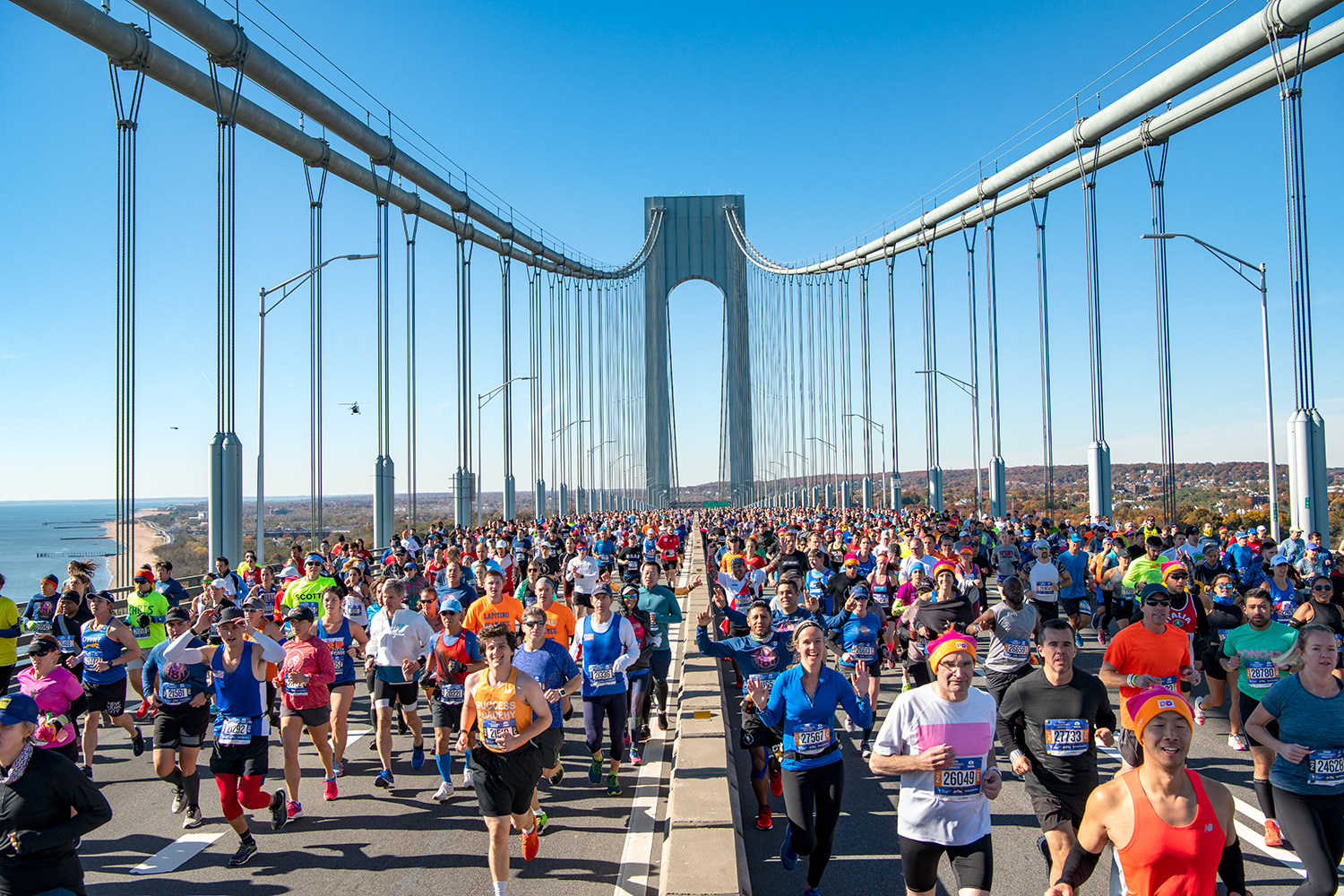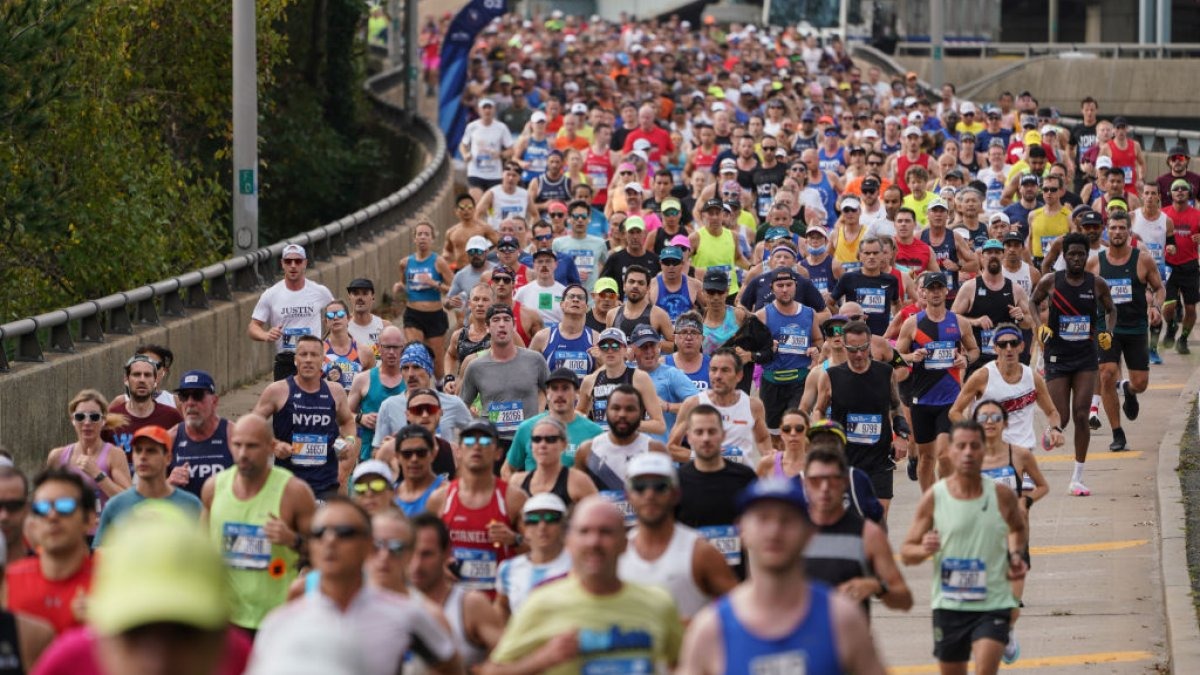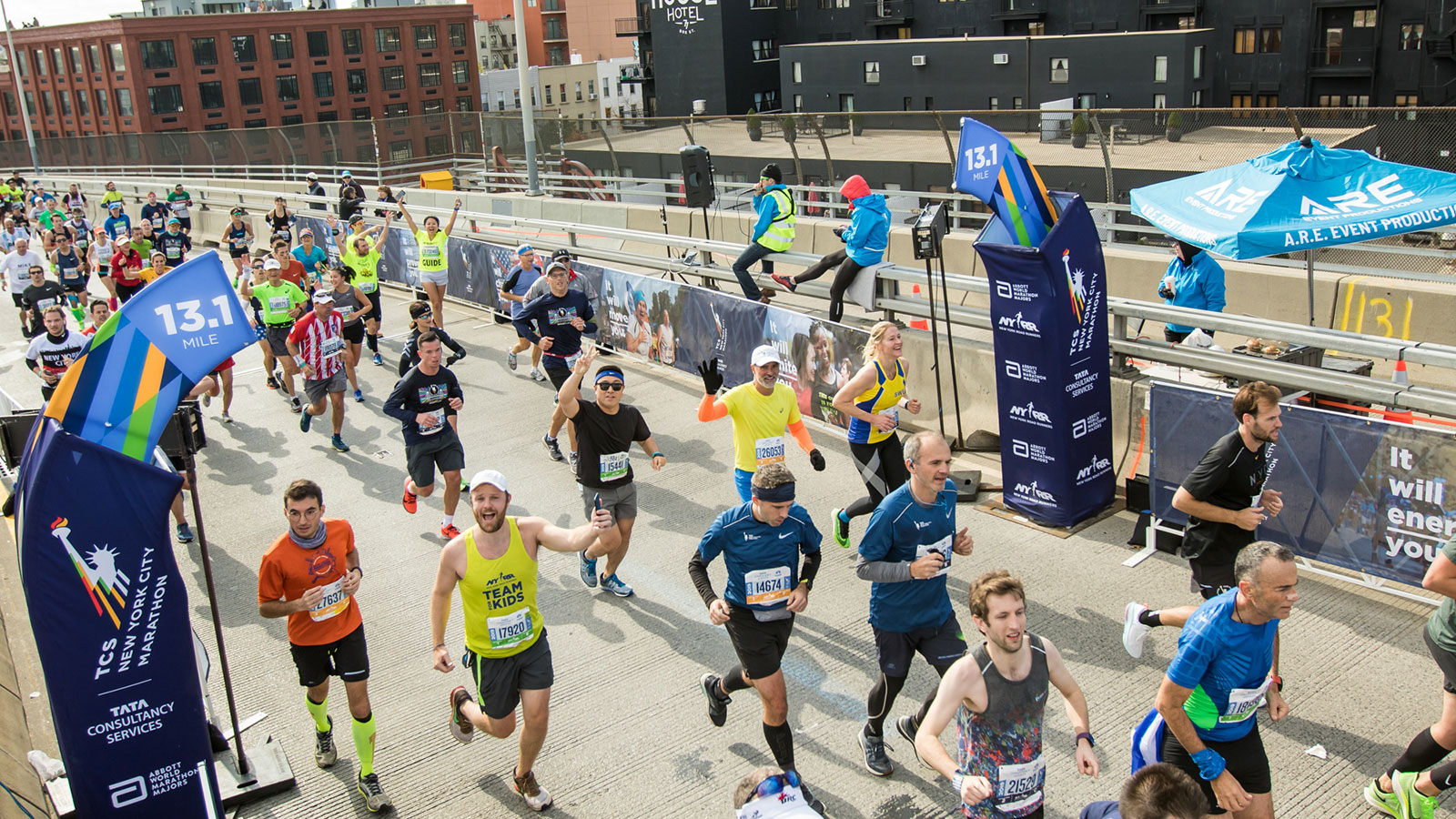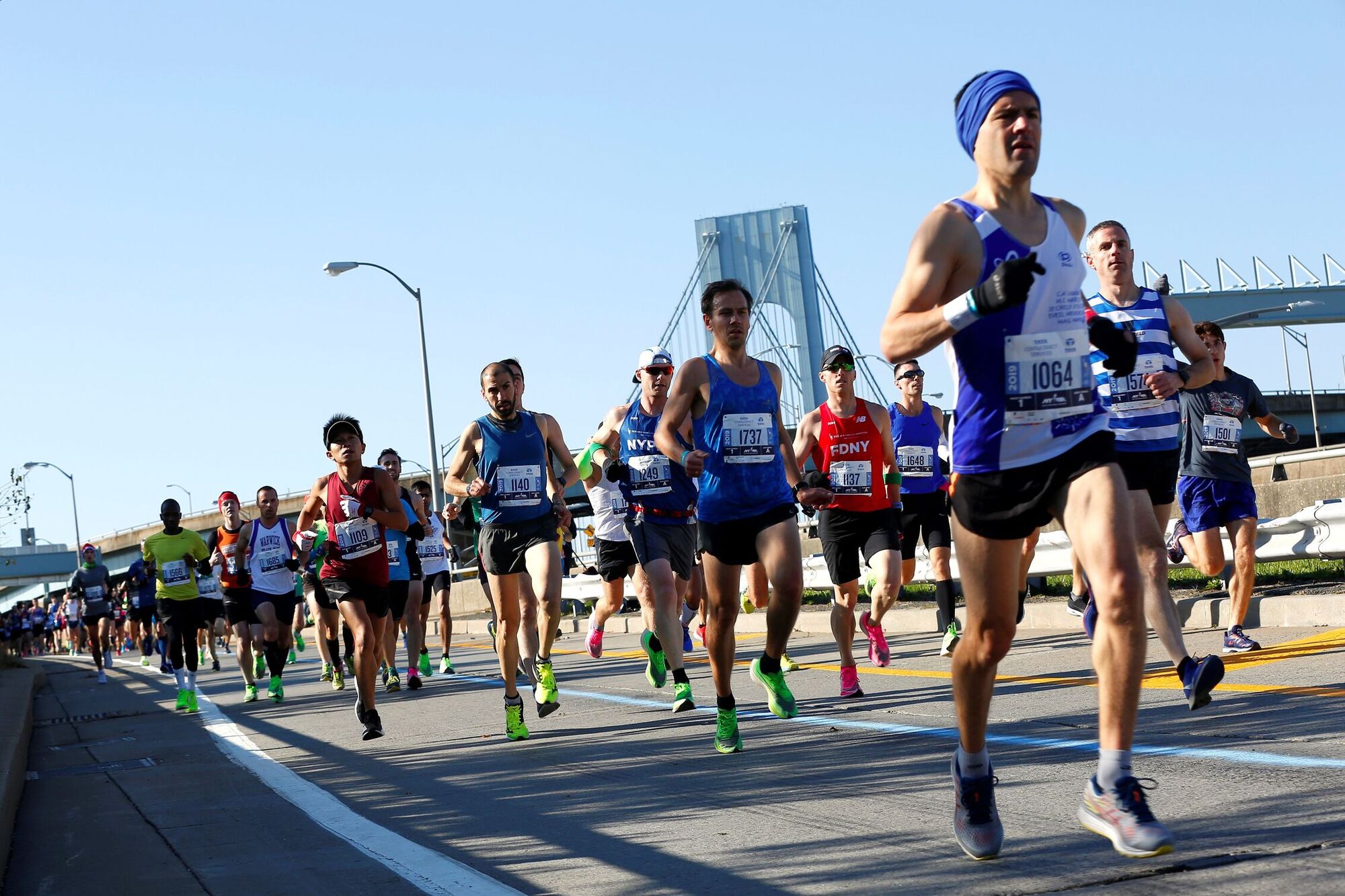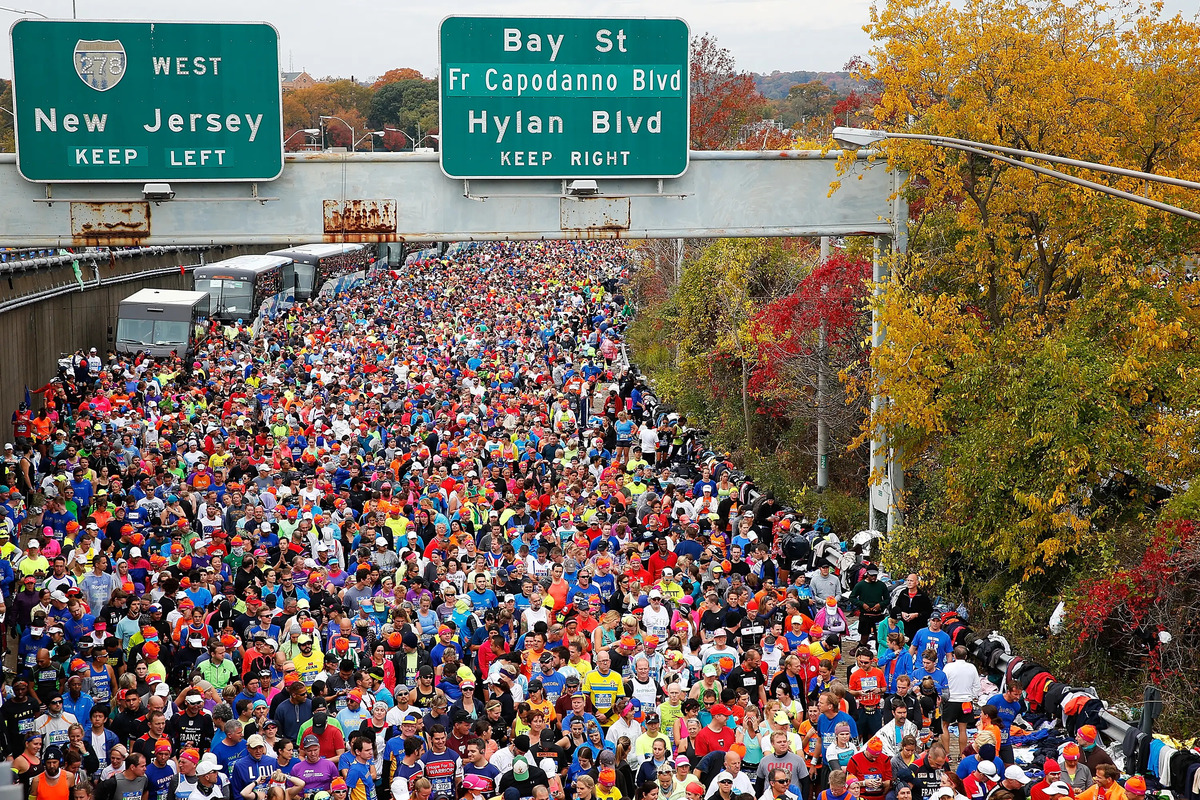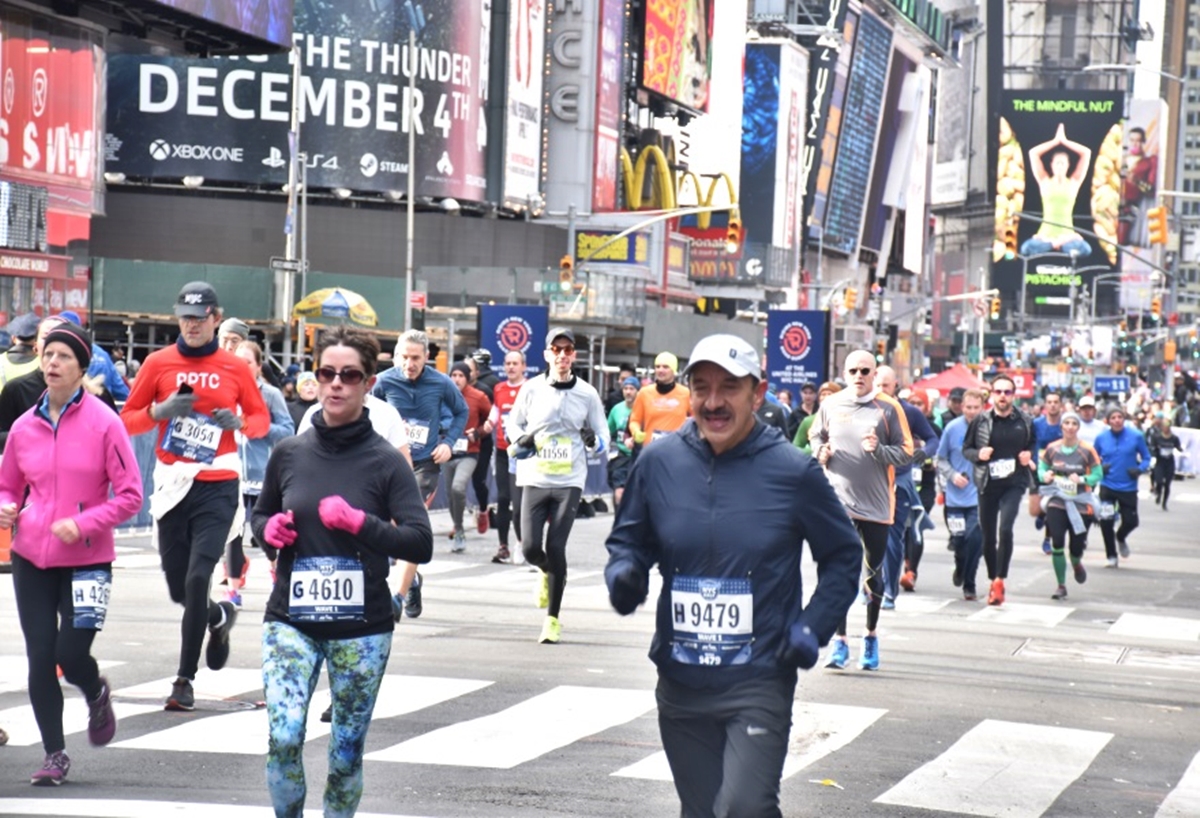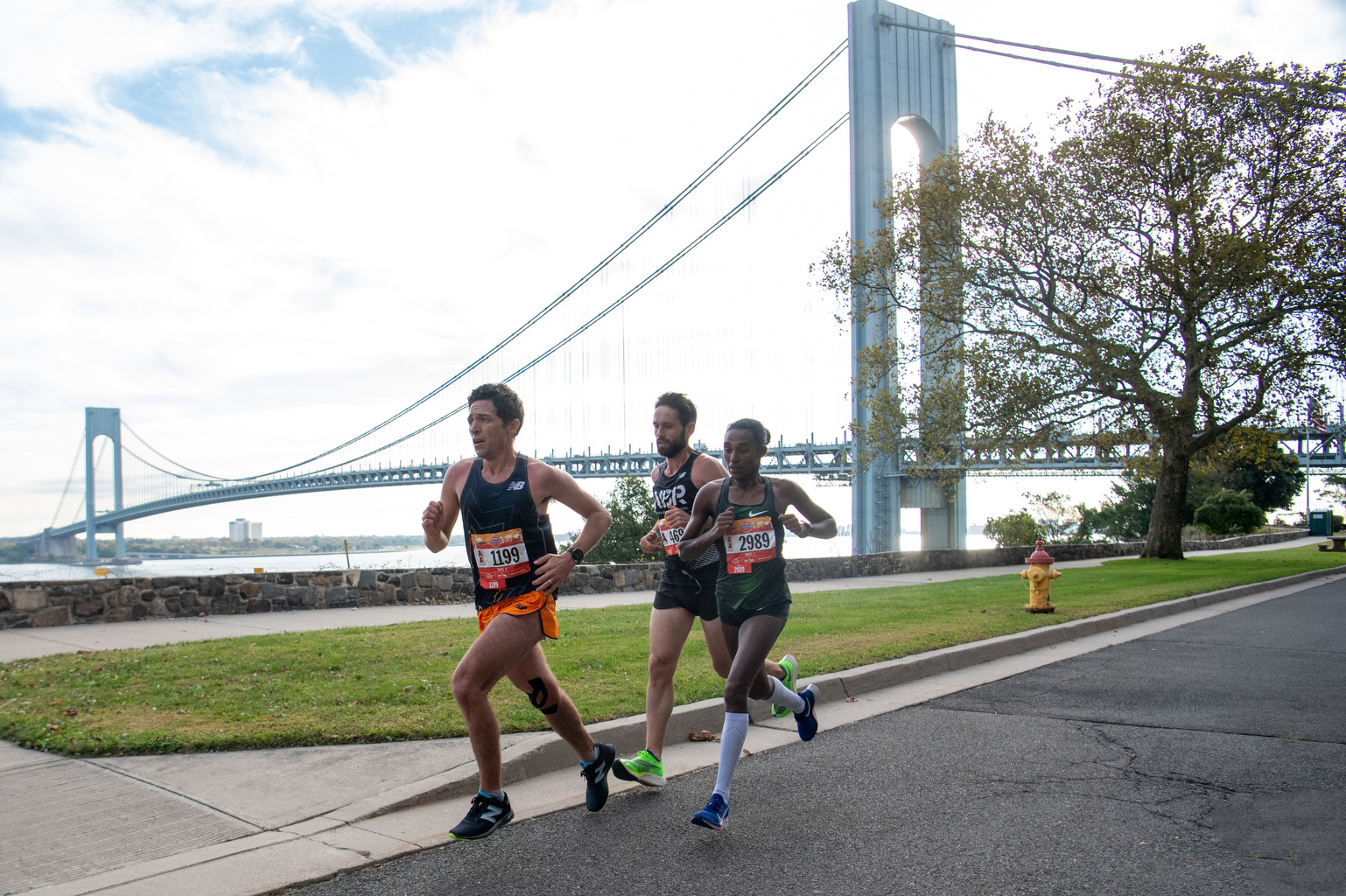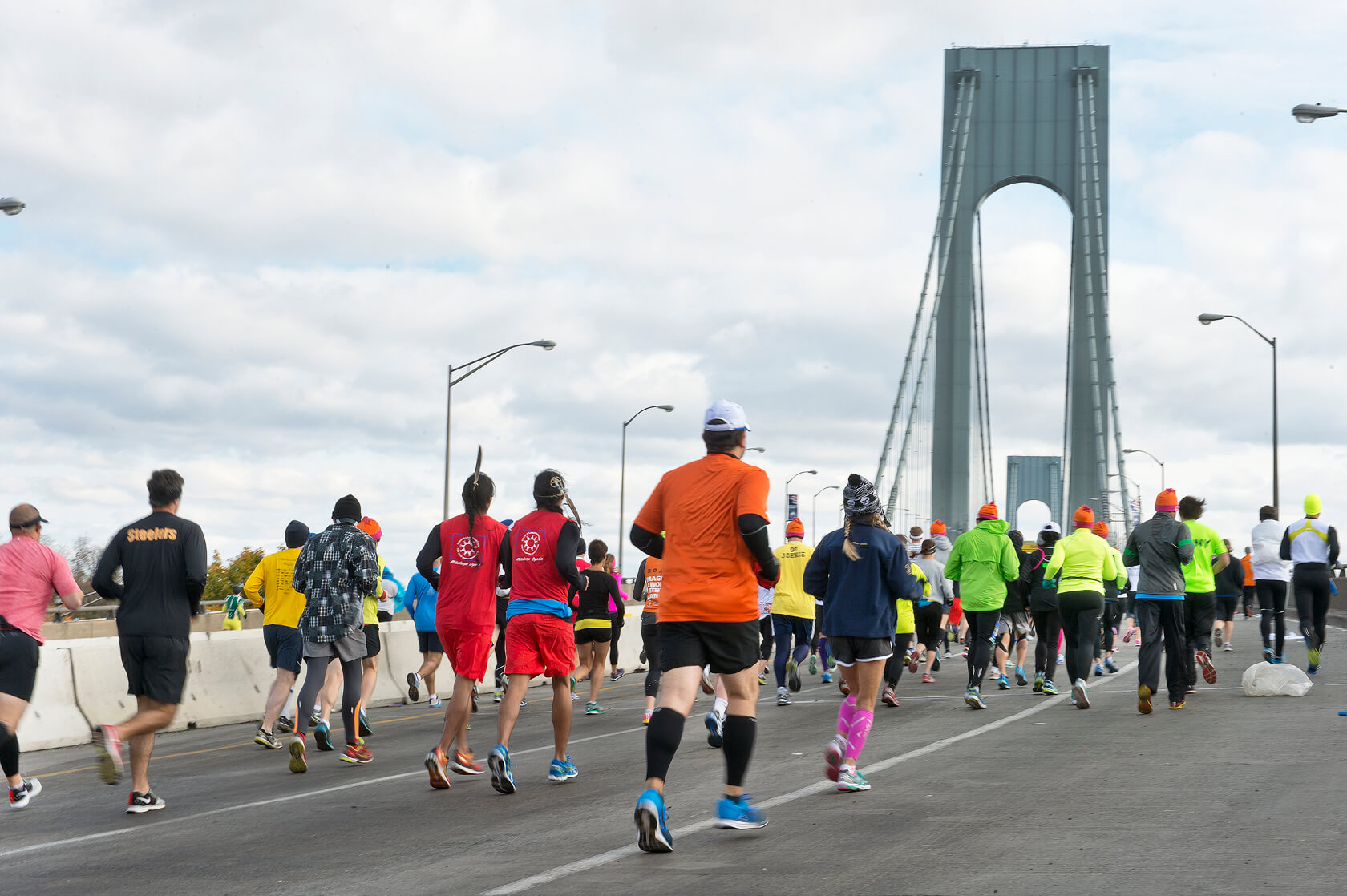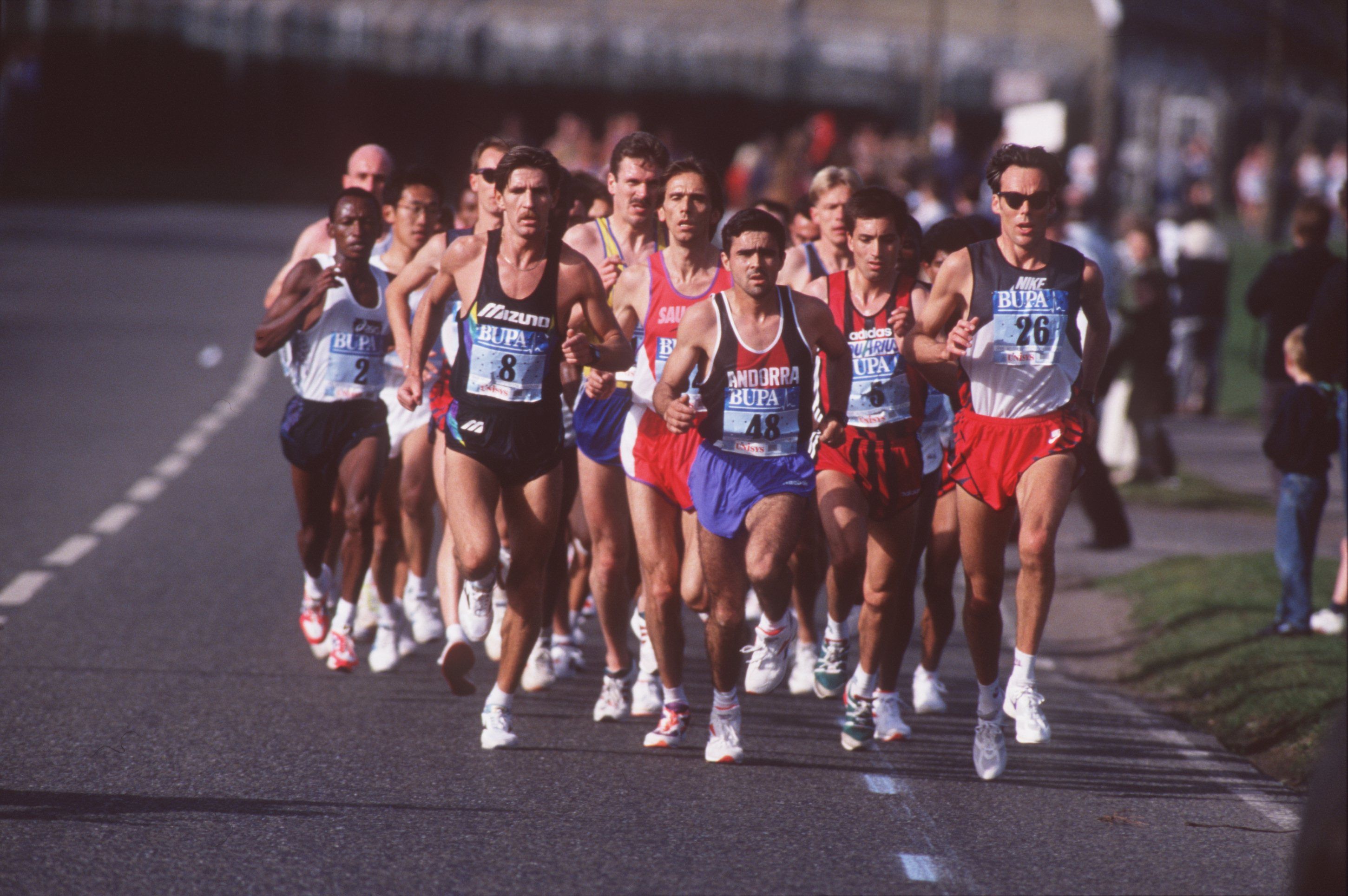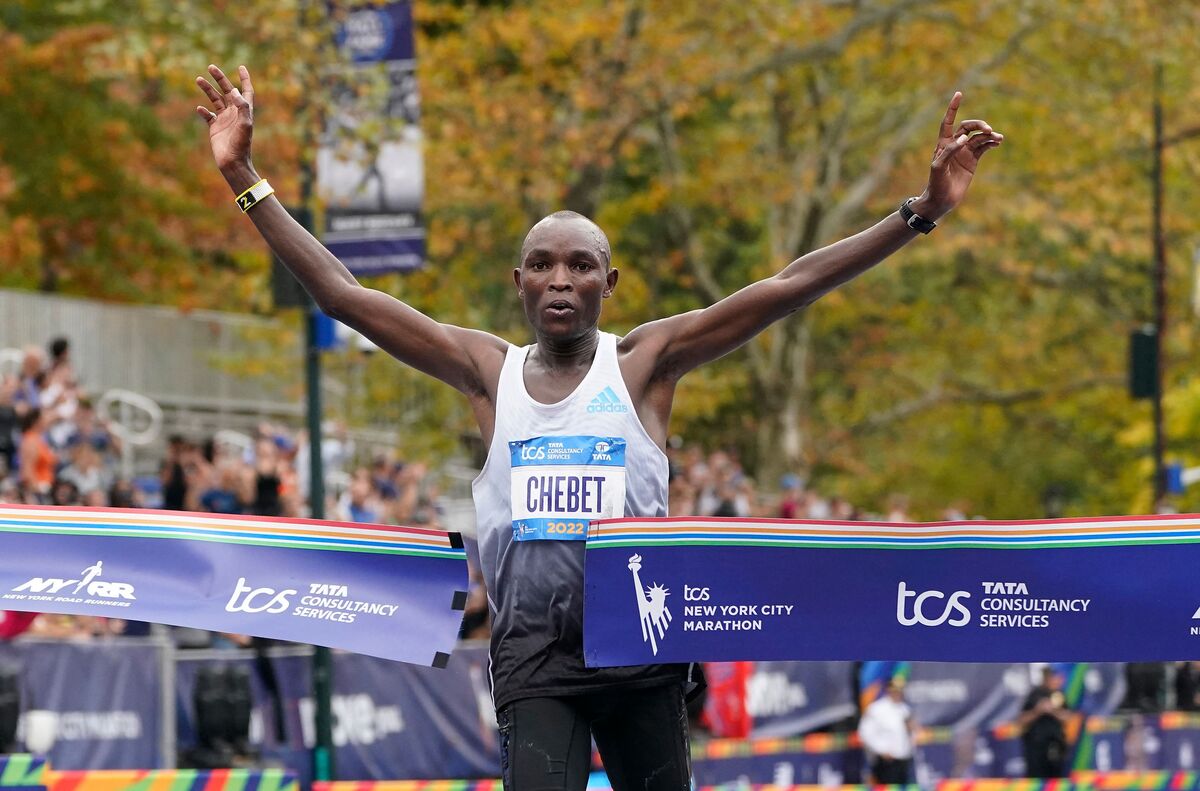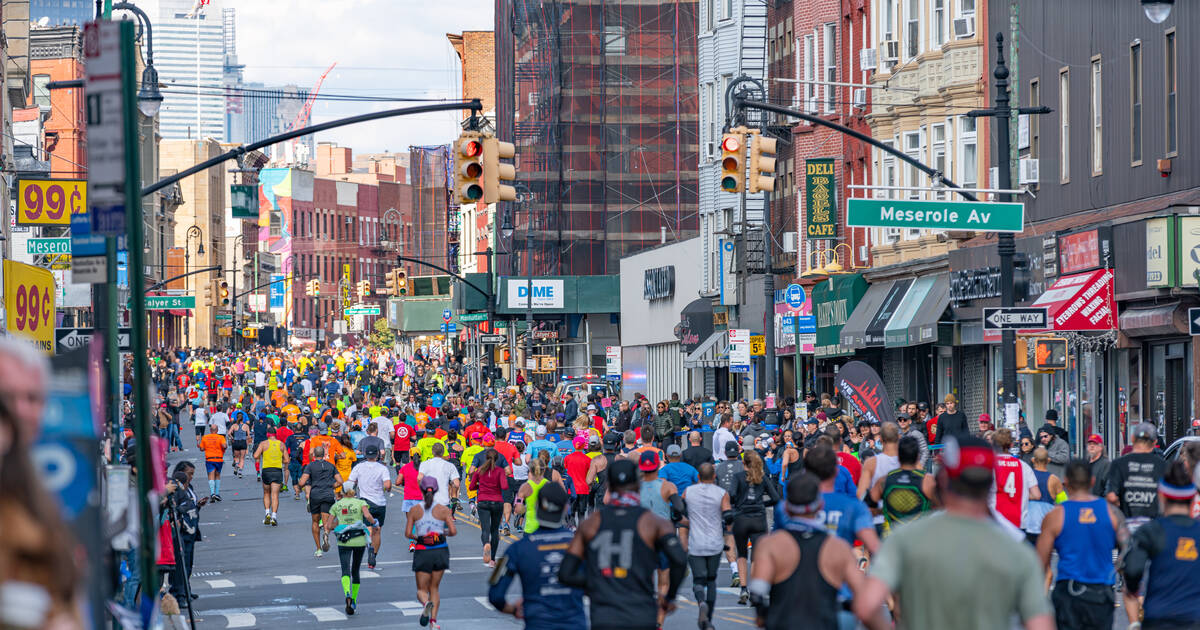

Featured
When Is New York Marathon
Modified: January 22, 2024
Discover when the highly anticipated New York Marathon is taking place and be a part of this featured event in the running world.
Introduction
The New York Marathon is one of the most prestigious and iconic long-distance running events in the world. Renowned for its challenging course, electric atmosphere, and rich history, it attracts thousands of runners from all over the globe year after year. Introduced in 1970, this annual marathon has become a symbol of determination, endurance, and personal achievement.
With its vibrant streets, diverse neighborhoods, and iconic landmarks, New York City provides the perfect backdrop for this exhilarating race. Stretching across all five boroughs – Staten Island, Brooklyn, Queens, the Bronx, and Manhattan – the course showcases the city’s unparalleled energy and spirit.
Runners from all walks of life, ranging from elite athletes to amateur enthusiasts, come together to tackle the 26.2-mile journey. It is a testament to the human spirit and the power of unity, as people from different cultures, backgrounds, and abilities unite for a common goal.
Not only is the New York Marathon a physical feat, but it is also a celebration of resilience and determination. The race offers a platform for runners to push their limits, conquer personal challenges, and make lasting memories.
In this article, we will delve deeper into the history of the New York Marathon, explore the route and course details, discuss registration and entry requirements, provide tips on training and preparation, and highlight the logistics of race day. Whether you are a seasoned runner or contemplating running your first marathon, this article will serve as a comprehensive guide to help you navigate the thrilling world of the New York Marathon.
History of the New York Marathon
The New York Marathon has a rich and storied history that dates back to its humble beginnings in 1970. Organized by Fred Lebow and Vincent Chiappetta, the inaugural race had only 127 participants, with a course that consisted of several loops around Central Park. It was a local event aimed at promoting fitness and attracting attention to the sport of long-distance running.
Over the years, the New York Marathon grew in popularity, drawing more participants and gaining international recognition. In 1976, the race was expanded to include all five boroughs of New York City, allowing runners to experience the diverse neighborhoods and iconic landmarks of the city.
The marathon gained significant attention in 1979 when professional runner Grete Waitz from Norway won the women’s division with a record-breaking time of 2:27:33. Her victory propelled the New York Marathon onto the global stage, and it quickly became an event that professional athletes aimed to conquer.
In the 1980s, the New York Marathon continued to evolve and set new milestones. In 1981, the race saw its biggest field yet, with over 14,000 registered participants. The following year, the first official wheelchair race category was introduced, allowing athletes with disabilities to compete alongside able-bodied runners.
One of the most memorable moments in the history of the New York Marathon occurred in 1994 when German runner Uta Pippig won the women’s division. In the final stretch of the race, Pippig faced intense muscle cramps and had to crawl across the finish line, displaying incredible determination and perseverance.
In recent years, the New York Marathon has continued to attract a diverse range of runners, including celebrities, charity fundraisers, and dedicated athletes. The event has also become known for its philanthropic efforts, with millions of dollars raised each year for various charitable organizations.
Today, the New York Marathon is one of the six World Marathon Majors, along with the marathons in Boston, London, Berlin, Chicago, and Tokyo. It is renowned for its challenging course, enthusiastic crowds, and unwavering support for all participants. The race holds a special place in the hearts of runners worldwide, symbolizing the pursuit of personal goals, a showcase of human resilience, and a celebration of the sport of marathon running.
Route and Course Information
The New York Marathon boasts a captivating course that takes runners through the vibrant streets and diverse neighborhoods of all five boroughs of New York City. The 26.2-mile route showcases iconic landmarks, scenic views, and the unmatched energy of the city.
The race begins on Staten Island, with runners gathering at the starting village in Fort Wadsworth. From there, they make their way across the Verrazzano-Narrows Bridge, which offers breathtaking views of the New York Harbor and the city skyline.
After crossing into Brooklyn, runners navigate through lively neighborhoods like Bay Ridge and Williamsburg, with local residents lining the streets to cheer them on. The course continues through Queens, where participants experience the vibrant atmosphere and cultural diversity of communities such as Long Island City and Astoria.
The marathon then crosses into the Bronx, providing runners a taste of a different borough’s energy before heading back into Manhattan. The course takes runners along the iconic Fifth Avenue, through Harlem, and past Central Park, offering a quintessential New York experience.
As the runners approach the final miles, they enter Central Park, a beautiful oasis in the heart of the city. The park provides a picturesque backdrop as participants make their way towards the finish line near Tavern on the Green.
The New York Marathon’s course has several challenging elements that test even the most seasoned runners. The multiple bridges, including the Verrazzano-Narrows Bridge and the Queensboro Bridge, present steep inclines and demanding descents. Additionally, the course features rolling hills in Central Park, requiring endurance and mental toughness.
Throughout the race, thousands of volunteers and spectators line the course, offering encouragement, hydration, and motivation. The support from the community adds to the race’s electrifying atmosphere and contributes to the runners’ determination to reach the finish line.
It is worth noting that the New York Marathon course is subject to change from year to year due to logistical considerations or construction projects. The organizers strive to maintain the integrity of the race while ensuring the safety and enjoyment of all participants.
Whether it’s the thrill of running across the Verrazzano-Narrows Bridge, the roar of the crowd in Central Park, or the energy of the diverse neighborhoods, the New York Marathon’s route offers an unforgettable experience for every runner who takes on the challenge.
Registration and Entry Information
To participate in the New York Marathon, runners must go through a registration process that guarantees them a spot in the race. Due to its popularity, the marathon follows a lottery system for general entries, ensuring a fair and equal chance for all interested participants.
The registration window typically opens several months before the race, and runners are encouraged to apply during this time to secure their spot. The entry fee varies depending on the participant’s nationality and residency status, with different rates for U.S. residents, non-U.S. residents, and members of the New York Road Runners (NYRR) club.
For those who prefer a guaranteed entry, there are several options available. Qualifying standards based on previous marathon times, running with a charity team, or participating in the NYRR 9+1 program, which involves completing nine NYRR races and volunteering for one, can all provide guaranteed entry. Additionally, international runners have the opportunity to secure a spot through an official international travel partner.
It’s important to note that the New York Marathon’s entry process can be highly competitive, and not all applicants will be selected. The lottery system ensures a fair distribution of entries, giving every applicant an equal chance to secure a spot in the race.
Once selected, runners must complete the registration process by submitting all required information and paying the entry fee. Participants may also have the option to purchase additional race-related merchandise, such as a personalized bib or commemorative gear.
It is essential for runners to carefully read and understand all registration instructions and deadlines provided by the organizers. Failure to meet any requirements or complete the registration process within the designated timeframe may result in the forfeiture of the entry.
The New York Marathon also embraces the spirit of inclusivity and encourages the participation of athletes with disabilities. The race offers various categories and accommodations for wheelchair athletes, visually impaired runners, and athletes with mobility impairments.
Whether securing a spot through the lottery, qualifying standards, or charity entry, the registration process for the New York Marathon ensures a diverse field of participants, each with their own unique journey to the starting line.
Training and Preparation
Preparing for the New York Marathon requires a diligent training plan and careful consideration of various factors, including physical fitness, nutrition, and mental preparedness. Whether you are a seasoned marathon runner or a first-timer, a structured training program is essential to ensure a successful race day.
It is advisable to begin training at least four to six months before the marathon. This duration allows enough time to gradually build endurance, improve strength, and prevent injuries. A training plan typically includes a combination of long runs, speed workouts, cross-training, and rest days for recovery.
Long runs form the backbone of marathon training, gradually increasing in distance each week to help the body adapt to the demands of running for 26.2 miles. Incorporating speed workouts such as tempo runs, intervals, and hill repeats helps improve overall speed and stamina.
Additionally, cross-training activities like cycling, swimming, or strength training can complement running by providing cardiovascular conditioning and strengthening muscles that are not utilized during running.
A crucial aspect of marathon preparation is maintaining a balanced and nutritious diet. Consuming a variety of nutrient-dense foods, including carbohydrates, proteins, healthy fats, and ample hydration, ensures the body has the fuel it needs to support training and recovery.
Mental preparedness is equally vital in marathon training. The New York Marathon, with its challenging course and large crowds, can be physically and mentally demanding. Incorporating mindfulness techniques, visualization exercises, and positive self-talk can help athletes stay focused, motivated, and manage race day jitters.
It is also essential to invest in proper running gear, including shoes that provide adequate support and cushioning, moisture-wicking clothing, and accessories like a GPS watch or a running belt for essentials.
Additionally, taking care of one’s body through regular stretching, foam rolling, and massage can help prevent injuries and promote recovery.
Joining a running group or finding a training partner can provide invaluable support, motivation, and accountability throughout the training process. Sharing experiences, tips, and encouraging each other can make the journey to the marathon more enjoyable.
Lastly, paying attention to rest and recovery is crucial in avoiding burnout and injuries. Adequate sleep, rest days, and active recovery activities allow the body to repair and rebuild, reducing the risk of overuse injuries or fatigue.
By following a well-structured training plan, fueling the body with proper nutrition, focusing on mental preparedness, and taking care of overall well-being, runners can set themselves up for an enjoyable and successful New York Marathon experience.
Race Day Logistics
Race day for the New York Marathon is an exciting and highly anticipated event, and proper logistics planning is crucial to ensure a smooth and memorable experience. From transportation to checking in at the starting village and post-race activities, here are some essential race day logistics to keep in mind:
1. Transportation: Plan your transportation to the starting village in advance, as roads around the area may be closed or congested. Utilize public transportation options, such as buses or subway trains, which may have dedicated routes for participants. Alternatively, consider carpooling or using rideshare services if available.
2. Arriving at the Starting Village: Give yourself ample time to navigate through security checkpoints and locate your assigned corral. Check the official race website or participant guide for specific instructions on where to enter the starting village and where to drop off any necessary bags or supplies.
3. Gear Check: If you have any belongings you need during the race, such as warm-up clothes or post-race attire, make use of the gear check service provided. Ensure that all items are securely packed in the designated bag and properly labeled with your race number.
4. Starting Corrals: Familiarize yourself with the designated starting corral based on your assigned bib number. Pay attention to the scheduled wave starts and be in your corral at the designated time. The corrals are organized based on expected race pace to ensure a smooth flow of runners.
5. Hydration and Fueling: Take advantage of the water stations and fueling stations along the course. Familiarize yourself with their locations and plan your hydration and nutrition strategy accordingly. It is recommended to have a race fueling plan in place and carry any necessary gels or snacks.
6. Spectator Viewing Areas: If you have friends or family members cheering you on, there are designated spectator viewing areas along the course. Inform them in advance about these locations to ensure they can support you at specific points.
7. Pace Management: Be mindful of your race pace and energy exertion throughout the course. It’s easy to get caught up in the excitement of the race and start too fast. Pace yourself according to your training and race strategy to ensure a steady and enjoyable run.
8. Post-Race Celebration: After crossing the finish line and receiving your medal, make sure to continue moving through the designated finish area to collect your finisher’s bag and any post-race snacks or beverages. Take time to celebrate your achievement and enjoy the post-race festivities.
9. Reuniting with Family and Friends: Establish a predetermined meeting point for reuniting with your family and friends after the race. Due to the large crowds, it is essential to have a specific location to regroup and celebrate together.
By carefully planning and considering these race day logistics, you can focus on enjoying your New York Marathon experience, celebrating your accomplishment, and creating lasting memories.
Spectator Information
The New York Marathon is not only a thrilling experience for the participants but also an exciting event for spectators. Watching loved ones or cheering on the dedicated runners can be a memorable and uplifting experience. Here is some important information for spectators attending the New York Marathon:
1. Viewing Areas: The race course winds through all five boroughs of New York City, providing multiple opportunities for spectators to find a suitable viewing spot. Consider the neighborhoods you wish to visit or iconic landmarks along the route, and plan accordingly.
2. Spectator Viewing Zones: To accommodate the large number of spectators, designated viewing zones are set up along the course. These areas offer optimal crowd density, allowing for an exhilarating and supportive atmosphere. Check the official race website for the specific locations of these zones.
3. Plan Ahead: Spectators should plan their day in advance. Study the marathon route and schedule to determine the best locations and times to catch a glimpse of their loved ones. It is advisable to arrive early to secure a good viewing spot, especially near popular landmarks or spectator zones.
4. Tracking Runners: Utilize the New York Marathon’s official tracking app or website to follow the progress of specific runners. Enter their bib numbers to receive real-time updates on their location along the course. This can help spectators anticipate when and where to cheer for their runners.
5. Bring Signs and Props: Show your support for the runners by creating colorful signs, banners, and props. Personalized messages or catchy slogans can provide an extra boost of motivation for the participants as they pass by. Just be sure to consider the size and portability of your signs for ease of use.
6. Safety and Etiquette: As a spectator, it is essential to prioritize safety and respect for both runners and fellow spectators. Observe and follow all instructions from race officials and security personnel. Avoid interfering with the runners’ path, and do not encroach on the racecourse.
7. Stay Hydrated and Comfortable: Spectators should come prepared with water and snacks to stay hydrated and energized throughout the event. Dress appropriately for the weather, wear comfortable shoes, and consider bringing foldable chairs or blankets for added comfort, especially if planning to stay for an extended period of time.
8. Capture the Moment: Spectators can capture the excitement and energy of the New York Marathon by taking photos or videos. However, be mindful of others around you and avoid obstructing the view of fellow spectators or interfering with the runners’ progress.
9. Post-Race Celebrations: After the race, join the celebration and reunite with the runners at pre-determined meeting points. Celebrate their achievements, offer congratulations, and share the joy of their accomplishment.
The New York Marathon offers a truly unique and inspiring experience for both runners and spectators alike. By planning ahead, following safety guidelines, and showing support for the participants, spectators can become an integral part of the race’s infectious energy and uplifting atmosphere.
Notable Winners and Records
Over the years, the New York Marathon has seen many remarkable performances and notable winners who have left an indelible mark on the race’s history. Let’s explore some of the most outstanding achievements and records set in this prestigious event:
1. Grete Waitz: Norwegian runner Grete Waitz is one of the legendary figures of the New York Marathon. She won the women’s division a record nine times between 1978 and 1988, setting the standard for dominance in the race. Waitz’s incredible talent and determination forever cemented her legacy as one of the greatest marathon runners of all time.
2. Alberto Salazar: American runner Alberto Salazar is another iconic figure in the New York Marathon’s history. He won the men’s division three times consecutively from 1980 to 1982, setting an unprecedented record at the time. Salazar’s performances showcased his incredible endurance and unmatched competitive spirit.
3. Tatyana McFadden: Paralympian Tatyana McFadden has achieved immense success in wheelchair racing. She has won the women’s wheelchair division of the New York Marathon an astounding eight times, displaying her athleticism and determination. McFadden’s record-breaking performances have solidified her place as one of the greatest wheelchair athletes in the sport.
4. Kerryn McCann: Australian runner Kerryn McCann is remembered for her memorable victory in the 2000 New York Marathon. Despite being a mother of two and relatively unknown at the time, McCann triumphed over a strong field of elite runners, showcasing her grit and determination in an unforgettable performance.
5. World Records: The New York Marathon has witnessed several world records over the years. Among the notable ones is the men’s world record set by Geoffrey Mutai from Kenya in 2011, with a blistering time of 2 hours, 5 minutes, and 6 seconds. The women’s world record was set by Margaret Okayo from Kenya in 2003, finishing the marathon in an astonishing time of 2 hours, 22 minutes, and 31 seconds.
6. Age Group Records: The New York Marathon celebrates athletes of all ages. Numerous age group records have been set, demonstrating the enduring spirit of runners across generations. One notable record is the oldest female finisher, Gladys Burrill, who completed the marathon at the age of 92 in 2010.
7. Overall Growth and Diversity: Beyond individual records, the New York Marathon has seen exponential growth and increased diversity in participation over the years. The race has become a global event, attracting runners from all corners of the world and representing various age groups, ethnicities, and backgrounds.
These notable winners and records exemplify the exceptional talent, determination, and dedication displayed at the New York Marathon. With each passing year, the race continues to create opportunities for athletes to push boundaries, shatter records, and inspire generations to come.
Conclusion
The New York Marathon is an iconic event that captures the imagination and hearts of runners and spectators alike. With its rich history, challenging course, and incredible atmosphere, it has become one of the most coveted marathons in the world. From its humble beginnings in Central Park to spanning all five boroughs, the race has evolved into a celebration of human resilience, unity, and personal achievement.
Participants training for the New York Marathon dedicate months of hard work, pushing their physical and mental limits to prepare for race day. They are joined by thousands of spectators who line the streets, cheering on their loved ones and offering unwavering support to all participants.
Throughout the years, the race has witnessed inspiring victories, world records, and acts of sheer determination. Runners like Grete Waitz, Alberto Salazar, Tatyana McFadden, and Kerryn McCann have left an indelible mark on the marathon’s history, embodying the spirit of triumph and excellence.
The New York Marathon has also become a platform for personal journeys, as runners from diverse backgrounds and abilities come together to conquer the challenging course. It represents the power of unity, the pursuit of personal goals, and the celebration of the human spirit.
As the marathon continues to grow in popularity, it remains committed to fostering inclusivity, encouraging charitable endeavors, and promoting a sense of community. The race’s impact extends beyond the finish line, with funds raised for numerous worthy causes, leaving a lasting legacy of goodness and generosity.
For both runners and spectators, the New York Marathon offers an unforgettable experience. From the electrifying start on Staten Island to the spirited crowds in Brooklyn, the diverse neighborhoods of Queens and the Bronx, and the iconic finish in Central Park, the race encompasses the true essence of New York City.
Whether you’re a seasoned runner chasing a personal best or a spectator cheering on the sidelines, the New York Marathon represents a monumental journey of determination, courage, and celebration. It is a testament to the human spirit’s ability to conquer challenges and reach new heights, leaving a lasting impression on all who participate.
